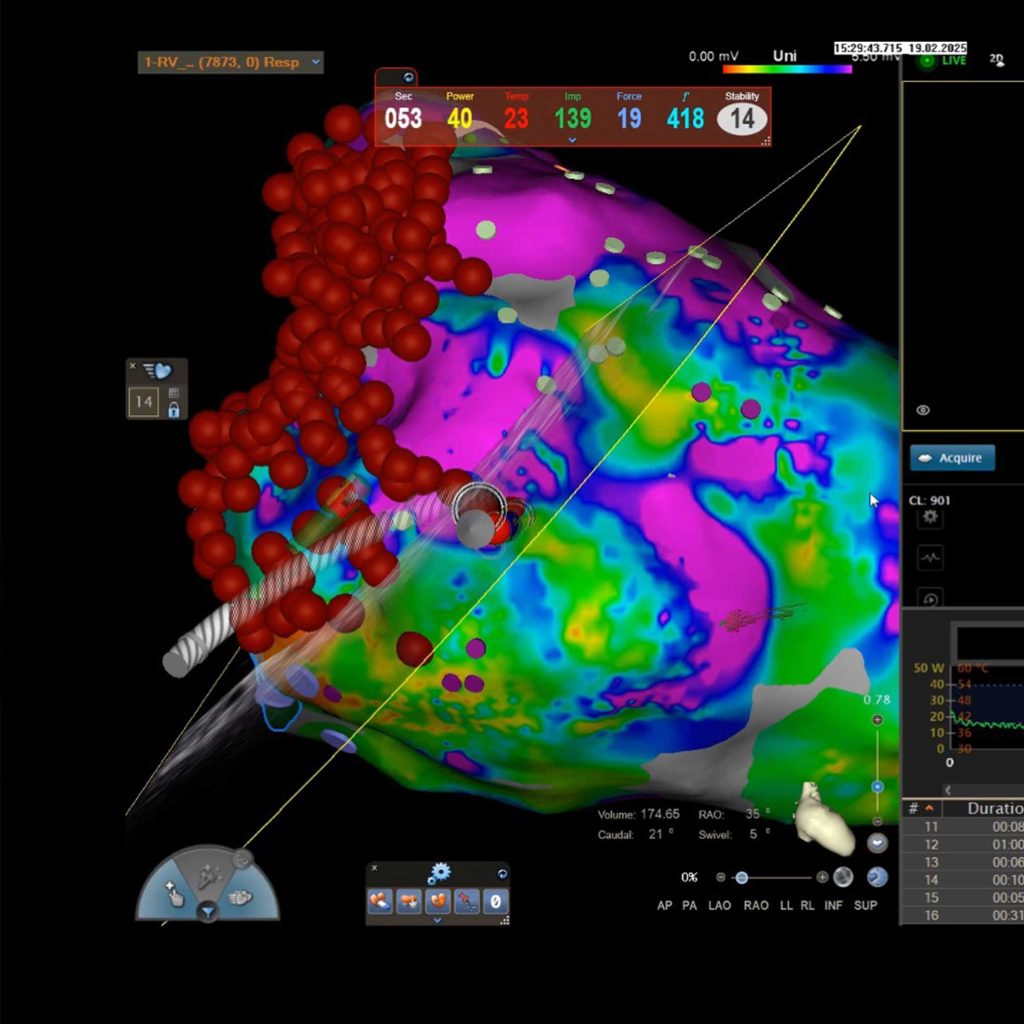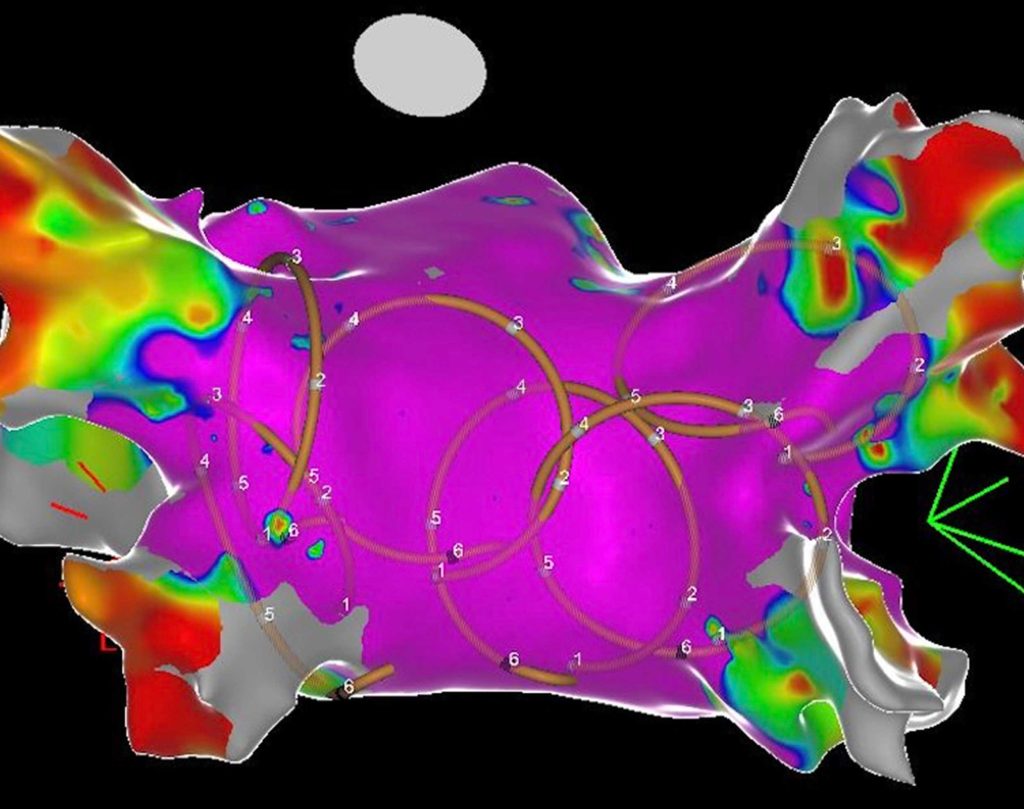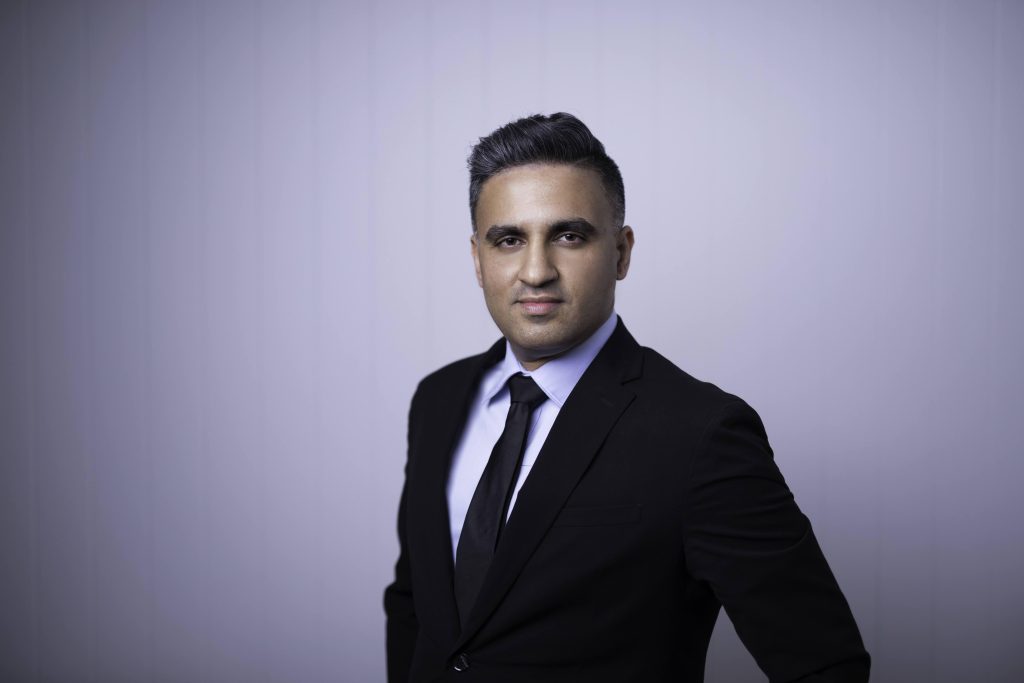Electrophysiology Studies & Mapping

Pinpointing the source of arrhythmias with precision and confidence
For patients with abnormal heart rhythms, a precise diagnosis is essential. Electrophysiology (EP) studies and mapping provide a detailed, real-time view of the heart’s electrical system, allowing clinicians to locate the exact source of arrhythmias and determine the most effective treatment.
At his practice in Sydney, A/Prof Saurabh Kumar offers advanced invasive EP studies and electroanatomical mapping as part of his comprehensive arrhythmia care. As a Cardiologist and Interventional Electrophysiologist, A/Prof Kumar has over 15+ years of experience in diagnosing and treating complex rhythm disorders, combining clinical expertise with state-of-the-art technology.
What is an Electrophysiology Study?
An invasive electrophysiology (EP) study is a specialised procedure that evaluates the heart’s electrical conduction system. Fine catheters are inserted into a vein—usually in the groin—and gently guided to the heart under X-ray or 3D mapping guidance. Once in position, these catheters record electrical activity and may deliver small impulses to provoke arrhythmias in a controlled setting.
The goal is to:
- Determine the cause and origin of an arrhythmia
- Classify the arrhythmia type (e.g., atrial vs. ventricular)
- Assess the risk of serious rhythm disorders
- Guide decisions about catheter ablation or device therapy
This procedure is typically performed under local anaesthetic with light sedation and involves minimal recovery time.
Services Offered
3D Electroanatomical Mapping
Programmed Electrical Stimulation
Inducibility Testing for Arrhythmias
Mapping of Arrhythmogenic Foci
The electrical origin—or “focus”—of an arrhythmia is carefully mapped within the atria or ventricles. Once identified, targeted treatment such as catheter ablation can be performed to isolate or eliminate the abnormal pathway.
When is an EP Study Recommended?
EP studies are typically recommended when:
- The cause of palpitations, syncope, or tachycardia remains unclear after non-invasive testing
- A patient has documented or suspected atrial fibrillation, SVT, VT, or AV block
- There is concern about inherited electrical disorders (e.g., Long QT syndrome, Brugada syndrome)
- Risk stratification is needed after a cardiac event or in patients with reduced ejection fraction
According to the Heart Foundation, more than 500,000 Australians live with atrial fibrillation alone—making access to accurate diagnosis and personalised treatment more important than ever.
With EP studies and mapping, A/Prof Kumar provides a clear path forward, transforming uncertainty into a confident treatment plan tailored to each patient’s condition and goals.


Take Control of Your Heart Health Today.
A/Prof Saurabh Kumar brings over 15+ years of clinical expertise to the care of patients with heart rhythm disorders and general cardiac conditions. He is widely regarded within the Australian cardiology community and internationally for his depth of knowledge, collaborative style, and commitment to patient-centred care.
He holds dual roles as a Staff Specialist Cardiologist and Cardiac Electrophysiologist at Westmead Hospital and Clinical Associate Professor of Medicine at the University of Sydney. He currently serves as the Program Director for Ventricular Arrhythmias and Sudden Cardiac Death at Westmead Hospital and is the Translational Electrophysiology Lead at the Westmead Applied Research Centre, University of Sydney.